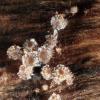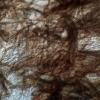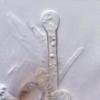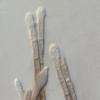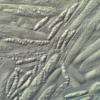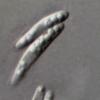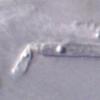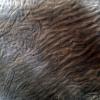
27-08-2025 12:02
Pavol PaloHello dear friendsI would like to ask for sharing

25-08-2025 17:37
 François Freléchoux
François Freléchoux
Bonjour,Nous avons trouvé samedi dernier à l'ét

20-08-2025 19:04
Ethan CrensonHello, This asco was found on the same wood as my

22-08-2025 08:41
Masanori KutsunaHello.Can anyone help me to get this article?Liu H

21-08-2025 02:18
Stefan JakobssonOn a necrotic section of a living Tilia cordata I
Lasiobelonium question
Chris Yeates,
01-09-2020 18:24

Yesterday I collected this ascomycete on a partly decorticated thin branch. I am sure it is a Lasiobelonium and probably L. variegatum.
Basal hairs were, as expected undulating, outer hairs occasionally with balls of tiny crystals, asci with croziers and with apical apparatus blue in Baralsche Löhsung, spores measured 10.6-15.6(17.5)µm. However a few features puzzle me. The paraphyses are slender and totally cylindrical, blunt-tipped and with no hint of a lanceolate apex. The spores consistently contain rather large globules at each end, with a small clear central area - none show any sign of becoming septate. I trust these features can be seen in the accompanying images.
There are relatively few UK records of L. variegatum (they distil down to around 12 on FRDBI), and I suspect that this is because of former confusion with - particularly - L. corticale (over 100 records on FRDBI). If all I had available was Dennis's Mycol. Pap. 32 (1949) p.39, then that would probably be what I would call this collection. I have not been able to find any image of L. variegatum spores with such profuse globules - though they do appear in Zotto's HB5633b for L. corticale.
I suspect a lot of my conclusion is down to my "vital taxonomy" approach but would welcome others' thoughts.
Cordialement, Chris
Hans-Otto Baral,
01-09-2020 20:38

Re : Lasiobelonium question
Hi Chirs
As you suspect, the prominent LBs in the spores exclude L. variegatum which is actually much more frequent than L. corticale in my experience.
The hairs are not undulating enough to key to L. variegatum.
The apical ring should react red in IKI at higher concentration.
Your spore size is rather low, did you measure the width also? 17-24 µm is a typical length and 3-4.5 width.
Apically inflated hairs I never saw in this species, though.
Any idea of the host plant?
Zotto


